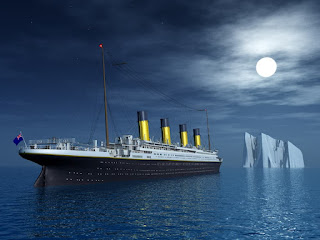People all across the world are still fascinated by the Titanic, the fabled ship that tragically sank on its first voyage in 1912. The Titanic continues to be a legendary representation of both human progress and the results of hubris because of its majesty and the tragic events that took place. This article delves into a thorough examination of the Titanic's major components, offering insights into their creation, design, and legacy. Come along with us on this intriguing historical tour.
The Hull and Structure
The Titanic's hull, a huge construction that gave the ship strength and buoyancy, was at its core. The ship's double-bottomed hull had 16 major compartments that were intended to keep it afloat even in the case of multiple leaks. Thousands of rivets held the steel plates used in the construction together. The hull's enormous size—more than 880 feet long and weighing over 46,328 tons—displayed the remarkable engineering of the day.
The Engine Room
The Titanic's engine room served as the centre of propulsion beneath the ship's decks. The engine room was a feat of engineering, powered by two reciprocating engines and a central turbine. The ship's wing propellers were driven by reciprocating engines, and the central turbine drove the central propeller. The ship's bunkers were used to store the large amount of coal needed for these massive engines. The ship's engine room was a crucial component of its operation, guaranteeing a steady and smooth sail.
The Passenger Accommodations
The Titanic was built with her passengers' comfort and elegance in mind. The ship's three classes—First, Second, and Third—offered varying degrees of extravagance. The First-Class lodging offered sumptuous suites, large dining areas, and lavish facilities. Passengers in second class were treated to luxurious accommodations and top-notch eating options. Steerage, or third-class, passengers had more basic cabins but continued to have access to social areas like dining rooms and leisure rooms. The variety of passenger accommodations was a reflection of the time's socioeconomic order.
The Grand Staircase
Its great stairway was one of the Titanic's most recognisable features. The grand staircase, which was in the First-Class section, was an architectural wonder created to exude majesty and elegance. The staircase was a focal point for social occasions and offered a regal entrance to the ship's upper decks since it was built with fine woodwork, artistic carvings, and elaborate railings. The Titanic's grand stairway has endured as a representation of its opulent atmosphere.
The Wireless Room
The Titanic's tragic voyage was greatly aided by the wireless room. The wireless room, manned by radio operators Jack Phillips and Harold Bride, handled message sending and receiving. The wireless operators got many alerts the night before the accident concerning icebergs in the ship's course, but they failed to pay heed to them. The tragic results of this communication breakdown are still recognised as a lesson in the value of clear communication.
The Lifeboats
Despite her magnificence, the Titanic did not have enough lifeboats to fit all of the passengers and crew. Only about 1,178 people could fit in the ship's lifeboats, which is a large portion of the total number of passengers. When the Titanic hit an iceberg, this shortage proved disastrous and a fight for survival ensued. The Titanic's narrative is still haunted by the absence of lifeboats, which prompted the creation of later marine safety laws to prevent such tragedies.
The Sinking and Aftermath
The Titanic hit an iceberg in the North Atlantic Ocean on the fatal night of April 14, 1912, and started to sink. More than 1,500 individuals lost their lives when the ship sank within a short period of time. There were substantial improvements made in marine safety legislation and practises as a result of the Titanic disaster. The tragedy also led to significant shifts in public opinion, and as a result, the ship's story has been immortalised in many pieces of literature, music, and film.
With its myriad components and complex design, the Titanic exemplifies a bygone period of grandeur and scientific advancement. The Titanic continues to intrigue people and serve as a cautionary tale about the frailty of human endeavours despite the tragic conclusion to its journey. We learn more about the ship's design, premature demise, and enduring legacy as a result of examining its many components. The narrative of the Titanic will live on in our collective consciousness as a symbol of both human success and the costs of arrogance.









.jpg)



.jpg)






0 Comments